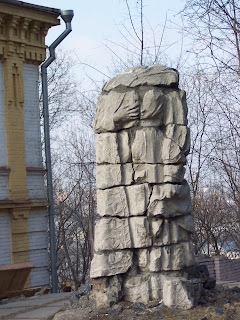My graduate course at V. Dahl EUNU seems to be going well. The last several weeks I have focused on a range of topics. I showed the students and faculty an excellent video entitled Through Deaf Eyes. It provides an interesting and thorough overview of deaf history, culture, the arts, politics, as well as a thoughtful discussion of complex and often controversial educational issues. My goals for this lessons were to illustrate how deaf and hard of hearing individuals in the United States have access to the same educational opportunities available to other students and can be just as successful as anyone else. The film is interesting, because it portrays deaf and hard of hearing Americans as individuals who do not see themselves as having a disability, but rather as active and successful members of a politically powerful and culturally rich community. The situation here in Ukraine is very different, and Dr. Krsek and I are hoping to touch enough hearts and minds to begin changing attitudes. Our hope is to help others see that deaf and hard of hearing individuals can graduate from universities and become independent and accepted members of society.
Last week we covered special education law. I began with a discussion of the impetus for special education law and current practices: the Civil Rights Movement, changes in ideologies, the Viet Nam War, the horrific conditions in state institutions such as Willowbrook, and law suits filed by parents and advocacy groups on behalf of children with disabilities. Some of the important court cases we examined were Brown (1954), Hobson (1967), Diana (1970), PARC (1971), Mills (1972), Rowley (1982), and Holland (1992). The session concluded with a discussion of legislation beginning with the now famous PL 94-142 and its subsequent reauthorizations. My goal was for the class to see the systematic progression and development of special education law over the years and the gradual evolution of the rights of students with disabilities. I also wanted them to understand how changes in attitudes and laws have impacted current educational practices and services.
This week we covered audiological management of deaf and hard of hearing students. It was a fairly technical lesson, but the main ideas I had hoped to get across were effective amplification of students with hearing loss and acoustic management of learning environments to facilitate student's access to the curriculum. We talked about acoustic conditions that impede students' learning and what can be done to help students hear more clearly in class. We also began a discussion of language and communication development of infants, but still have considerable information to go over, yet. We will continue that topic next week.





















































